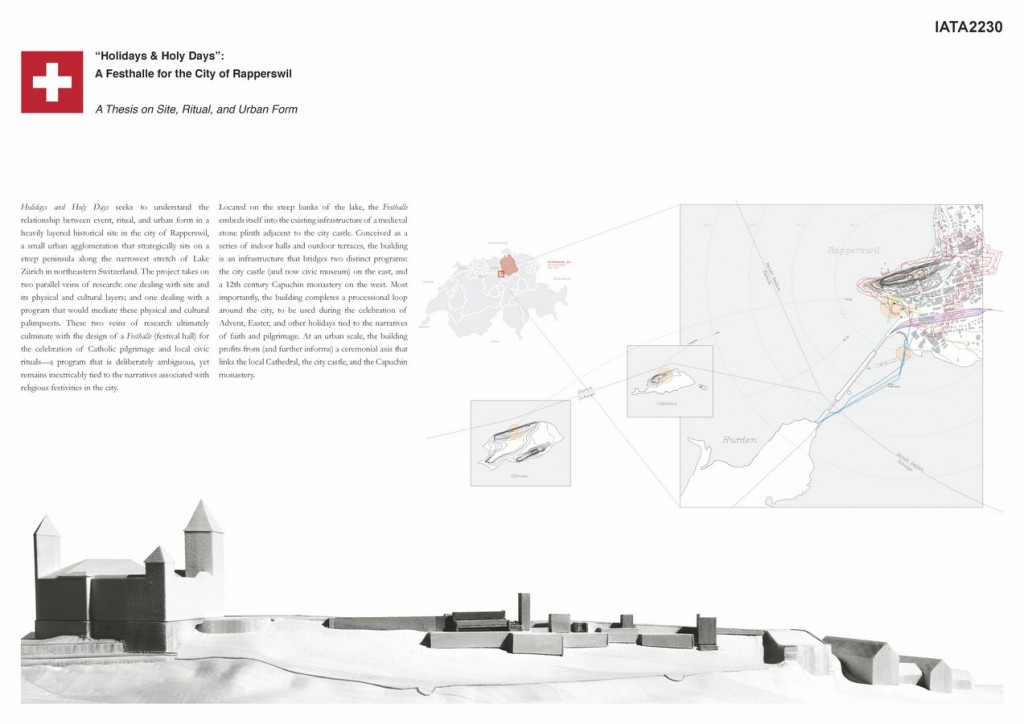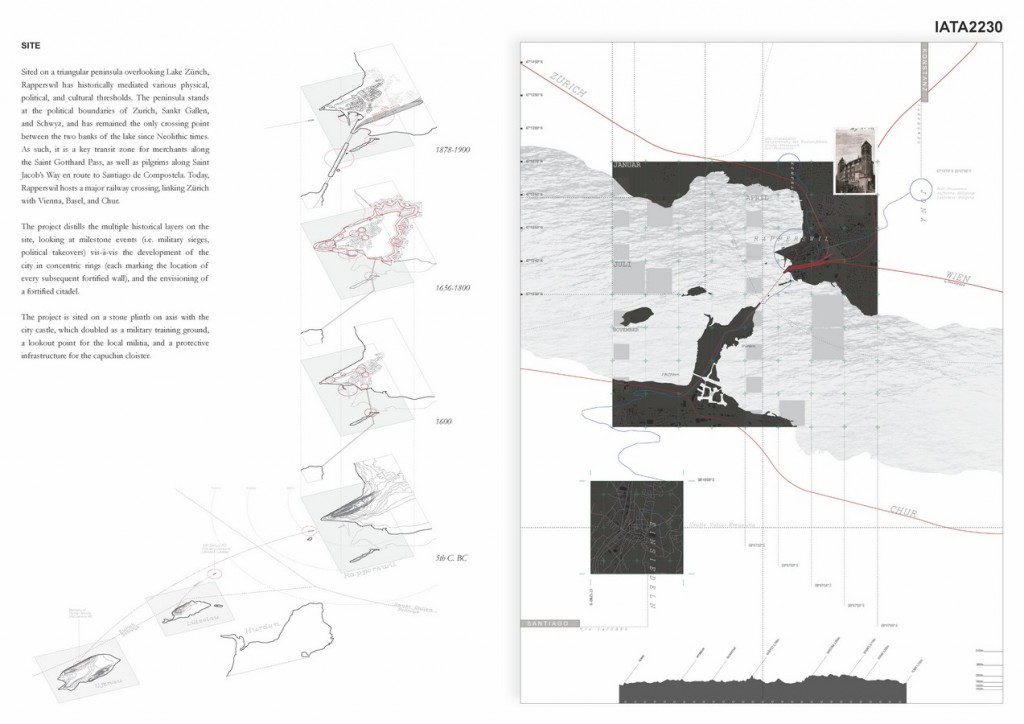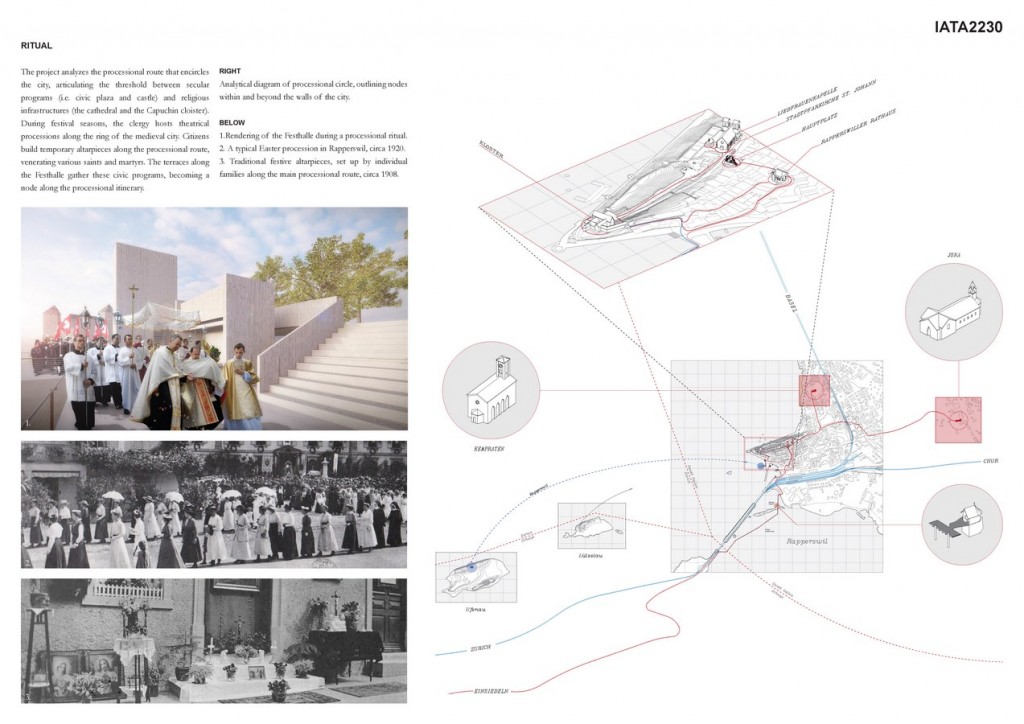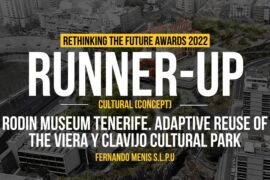“Holidays and Holy Days” seeks to understand the relationship between event, ritual, and urban form in a heavily layered site in the city of Rapperswil, a small urban node that strategically sits on a steep peninsula along the narrowest stretch of Lake Zürich in northeastern Switzerland. The project bridges two parallel veins of research: one dealing with site and its physical and cultural layers; and one dealing with a program that would mediate these physical and cultural palimpsests. These two veins of research ultimately culminate with the design of a Festhalle (festival hall) for the celebration of Catholic pilgrimage and local civic rituals—a program that is intentionally ambiguous, and remains inextricably tied to the narratives associated with religious festivities in the city.
Participant Name: Mauricio Vieto
Country: United Kingdom

SITE: Sited on a triangular peninsula overlooking Lake Zürich, Rapperswil has historically mediated various physical, political, and cultural thresholds. The peninsula stands at the political boundaries of Zurich, Sankt Gallen, and Schwyz, and has remained the only crossing point between the two banks of the lake since Neolithic times. As such, it is a key transit zone for merchants along the Saint Gotthard Pass, as well as pilgrims along Saint Jacob’s Way en route to Santiago de Compostela. Today, Rapperswil hosts a major railway crossing, linking Zürich with Vienna, Basel, and Chur. The project distills the multiple historical layers on the site, looking at milestone events (i.e. military sieges, political takeovers) vis-à-vis the development of the city in concentric rings (each marking the location of every subsequent fortified wall), and the envisioning of a fortified citadel, never to be completed.
The project is sited on a stone plinth on axis with the city castle, which doubled as a military training ground, a lookout point for the local militia, and a protective infrastructure for the capuchin cloister.

RITUAL: The project analyzes the processional route that encircles the city, articulating the threshold between secular programs (i.e. civic plaza and castle) and religious infrastructures (the cathedral and the Capuchin cloister). During festival seasons, the clergy hosts theatrical processions along the ring of the medieval city. Citizens build temporary altarpieces along the processional route, venerating various saints and martyrs. The terraces along the Festhalle gather these civic programs, becoming a node along the processional itinerary.

URBAN FORM: Located on the steep banks of the lake, the Festhalle embeds itself into the existing medieval stone plinth adjacent to the city castle. Conceived as a series of indoor halls and outdoor terraces, the building is an infrastructure that bridges two distinct programs: the city castle (and now civic museum) on the east, and a 12th century Capuchin monastery on the west. Most importantly, the building completes a processional loop around the city, to be used during the celebration of Advent, Easter, and other holidays tied to the narratives of faith and pilgrimage. At an urban scale, the building profits from (and further informs) a ceremonial axis that links the local Cathedral, the city castle, and the Capuchin monastery.
Next Post
Tower of Memory | Amanda Mullen Ryan Burckhardt
2 Mins Read





